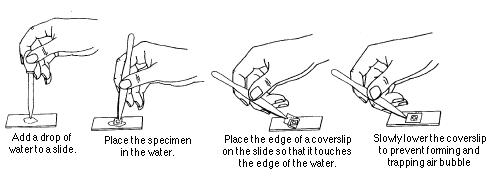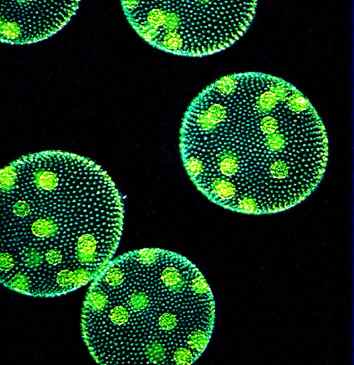Motile: Organisms that are able to move around.
Sessile: Organisms that are stationary.
Producer: Organisms that make their own food in order to obtain energy.
Consumer: Organisms that eat other animals in order to obtain energy.
Autotroph: Organisms that produce their own food by using solar and chemical energy.
Heterotroph: Organisms that acquire energy from other organisms.
Materials: A microscope, a slide, pond water, a cover slip and a dropper.
Procedure: Set up a slide containing pond water and observe the organisms it contains under a microscope. Then determine the name and if the organism is sessile, motile, a producer, a consumer and whether it is autotrophic or heterotrophic.
Questions:
1. What might the role of a microorganism be in a freshwater community? The role of microorganisms in a freshwater community would be that the organisms feed off the dead and decaying plants and animals. They help to filter the water. Also, the organisms act as a food source for other animals living in or around the water.
2. Describe the process of preparing a wet mount.
3. Differentiate between microorganism and micro-community.
A microorganism is any organism that is to small to be seen by the unaided eye such as bacteria, protozoa, some fungi and algae. A micro-community is a group of microorganisms living together in one area that effect an environment.
Organism #1 Volvox: It is a motile organism and a producer. Since it is a producer, it can also be classified as an autotroph.
Organism #2 Euglena: It is a motile organism that uses it's flagella, "tail", to move. They contain chlorophyll which they uses to produce its own food through photosynthesis. Since it produces it's own food it is called an autotroph.
Organism #3 Paramecium: It is a motile organism. Paramecium is a consumer and a heterotroph, that has to obtain energy from other organisms.
Organism #4 Anabaena: This organism is photosynthetic, classifying it as a producer and an autotroph. It is also sessile, or stationary, which explains why it has to produce it's own food.
Organism #5 Zygnema: This is a sessile, or stationary organism. It uses photosynthesis to make it's own food. It can therefore be classified as a producer and an autotroph.
Organism #6 Amoeba: This is a motile organism. Amoeba is a producer and an autotroph.





No comments:
Post a Comment